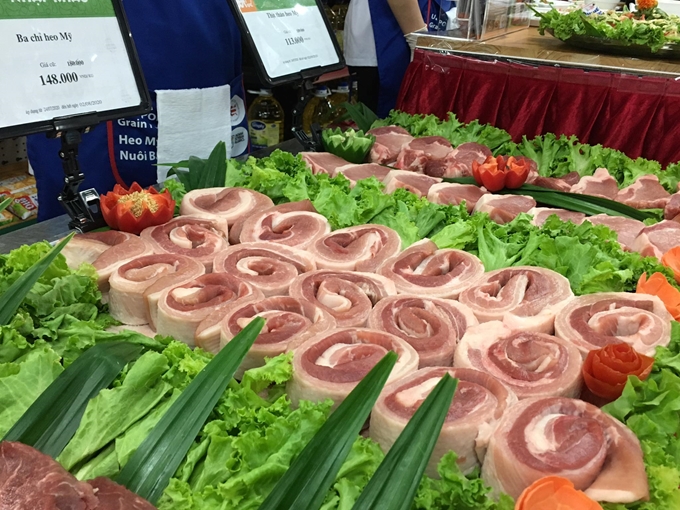Ha Noi imports pigs from U.S
VGP – U . S . pork has been introduced to consumers in Ha N oi and some neighboring localities through the BRGMart supermarket system , as the country is seeking to rebuild its hog herd battered by an African swine-fever outbreak.
 |
| Illustration photo |
Ms. Sarah Gilleski, Agricultural Counselor of the U.S.Embassy in Viet Nam said each piece of meat has been carefully inspected and stamped with certificate of quality safety; ensuring the highest standards on being delivered to customers.
Pork imported from the U.S. is strictly controlled from breeding, slaughtering, processing and preserving.
In order to meet domestic demand and help stabilize pork prices in the market, BRG Retail has coordinated with the US Meat Export Federation and the US Embassy to host “US Pork Week”. The event was launched on July 24th.
After the event, a week to promote US meat will run until August 2nd at 50 supermarkets and minimarts of the BRGMart system in Ha Noi, Hung Yen, Hai Duong, Hai Phong and Quang Ninh.
Visitors will have opportunities to learn more about recipes and sample dishes made from American pork and receive attractive gifts.
Currently, Viet Nam allows imports of live pigs for slaughter for the first time as the country grapples with record prices of hogs and pork because of a resurgence of African swine fever, according to the agriculture ministry.
The nation has culled almost 4,000 pigs this year as virus outbreaks recurred in 155 communes in 20 provinces and cities, including the capital Ha Noi.
Infections reappeared among animals in small households mostly with the spread driven by quick sales and slaughter of sickened pigs.
The ministry didn’t specify how many live pigs for slaughter the country will buy and when shipments will begin.
Imported hogs will be subject to a 30-day quarantine, according to the ministry post on the government website. Companies have registered to import more than 110,000 breeding pigs this year to help rebuild herds and ensure sufficient supplies through 2024.

